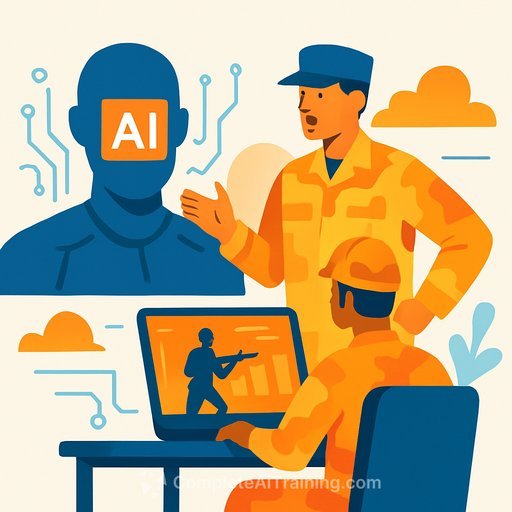AI Boot Camp Goes Operational at INDOPACOM: What It Means for Your Team
Special Operations Command Pacific is running its first AI boot camp this week to help leaders use artificial intelligence in daily work. The push is clear: the Indo-Pacific theater needs AI-enabled operations, and leadership has directed the move.
As Maj. Gen. Jeffrey VanAntwerp put it, "The reasons why AI adoption has been difficult for us is because we're creatures of habit… we fear change." He added a second blocker: "we don't know how to do the new thing." For operations leaders, that's the mission-build new habits and new how-to.
What the Boot Camp Covers
The program brings in directors and deputy directors for four days. Experts are teaching how to make sense of large language models available across top secret, secret, and unclassified enclaves.
VanAntwerp expects the energy to spread across the headquarters and accelerate usage. But he's clear on the role: AI assists decision making; it doesn't make the decision.
Why This Matters for Ops
This isn't theory. This is about quicker plans, tighter targeting cycles, cleaner briefs, and less lift on admin. If you're running operations, the takeaway is simple: move from pilots to playbooks.
- Pick 3 workflows to automate in 30 days: intel summaries, course-of-action comparisons, and daily operations updates.
- Standardize enclaves: unclassified for drafting, secret for fusing, top secret for sensitive synthesis-keep data where it belongs.
- Define decision rights: AI proposes; humans approve. Log prompts, outputs, and final calls.
- Enforce prompt hygiene: structure inputs, tag sources, include constraints, ask for confidence and citations when possible.
- Red-team outputs: check accuracy, bias, hallucination risk, and classification spillover before scale-up.
Robotics, Autonomy, and Resilient Networks
VanAntwerp highlighted a crucial triad: robotics, autonomy, and the network that commands them. "The combination of those three things… are absolutely critical for us."
Why? Because disrupting an adversary's targeting cycle keeps your force breathing. Sensors from the sea floor to space are useful only if you can move the data and form a coherent picture over a network that holds up under stress.
Network-First Thinking for Operations
- Prioritize transport: plan for contested SATCOM, add mesh options, and cache at the edge.
- Push inference forward: run models near sensors to cut bandwidth needs.
- Plan for low bandwidth: compress products, summarize early, and send only what's useful for the next decision.
- Codify message precedence: time-sensitive over perfect, always.
What We Can Learn from China's Approach
China is wiring sensors across domains, then moving data up the chain to build a picture and act. That model underscores a blunt lesson: collection means little without transport and fusion.
As VanAntwerp said, "all that information… is meaningless if you can't transport it… and make a coherent picture out of it." Invest just as much in the pipes and the synthesis as you do in the sensors.
A Simple 4-Day Boot Camp Blueprint You Can Run
- Day 1: Foundations - Capabilities, limits, classification rules, human-in/on-the-loop doctrine, risk controls.
- Day 2: Workflows - Build prompts and SOPs for 5 core tasks (intel briefs, COA analysis, mission logs, tasking, reports).
- Day 3: Integration - Connect to enclaves, set access controls, logging, and audit trails; measure speed and quality gains.
- Day 4: Stress Test - Simulate disruption; run on degraded networks; red-team the outputs; finalize a rollout plan.
Guardrails That Keep You Fast and Safe
- AI assists; humans decide. Make that explicit in every SOP.
- Traceability: retain prompts, sources, and outcomes for after-action reviews.
- Data discipline: no sensitive inputs in lower enclaves; sanitize before sharing.
- Training cadence: refresh quarterly as models and TTPs change.
Resources
Quick Checklist for Ops Leaders
- Define three high-impact workflows to automate.
- Stand up enclave-specific usage rules and logging.
- Write prompt templates and review SOPs.
- Train directors and deputies first; cascade to teams.
- Measure cycle-time cuts and decision quality every week.
AI won't replace your judgment. It will shorten the distance between sensor and decision-if you set the structure, protect the network, and keep humans accountable for the final call.
Your membership also unlocks:






